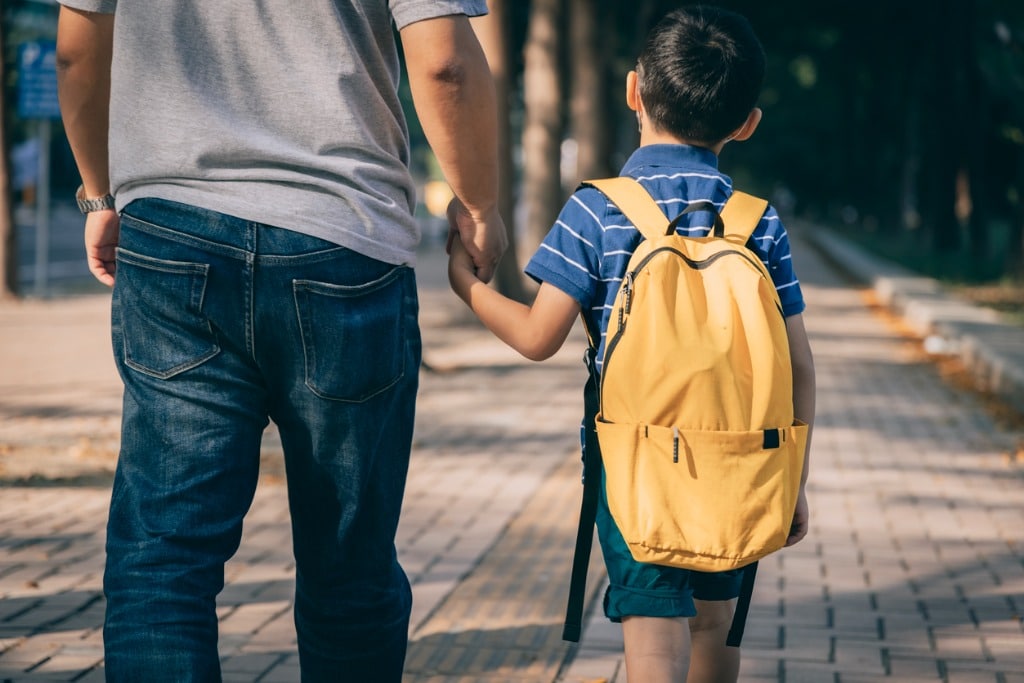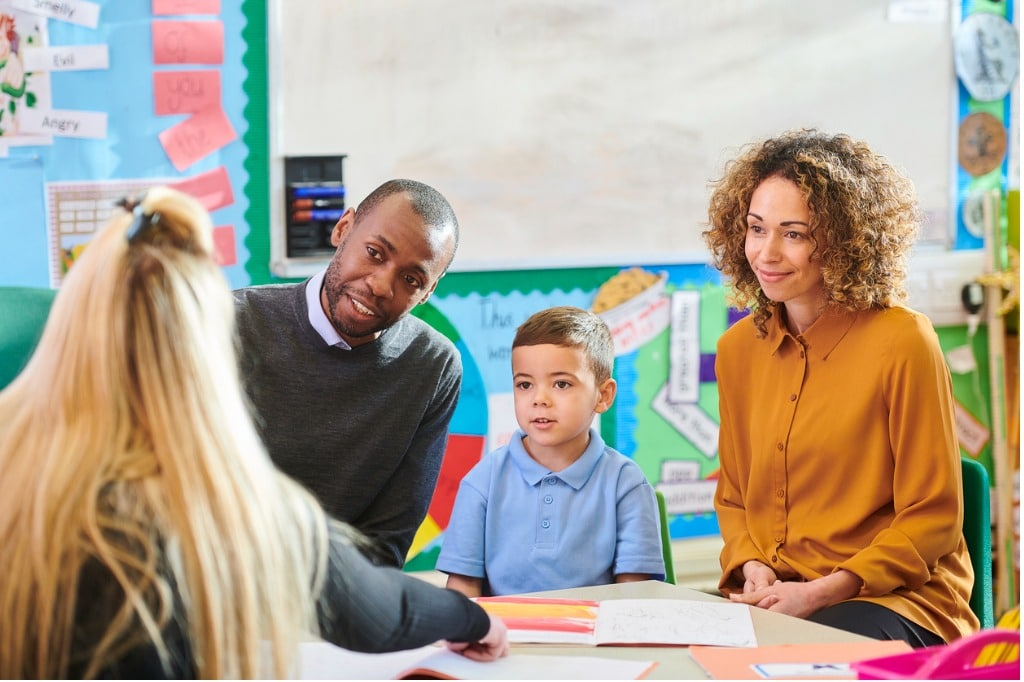The importance of parental involvement in the classroom can’t be overstated. It’s one of the best predictors of student success. We’ve noticed a positive correlation between student achievement and parent involvement with their child’s education and learning at home.
This coordinated effort between teachers and parents can result in a profound change in classrooms. Parental engagement in children’s school lives gives students the home support they need to finish their assignments; it contributes to developing an environment that encourages them to cultivate a lifelong love of learning.
Parental engagement is when a parent generally knows what is going on in their student’s classroom, but they may not be involved in what they are learning or have the resources to be involved in the process.
Parental involvement is a little different than parental engagement. Parental involvement is when parents participate in school events or activities, and teachers provide learning resources for parents or information about their student’s grades.
While teachers can advise parents on educational decisions and things going on with their students in the classroom, parents will have important information about their children that teachers won’t necessarily have access to.
These two differing viewpoints are why a foundation of communication that comes from a mutual dedication to the student’s success is so important for teaching students and helping them achieve success most effectively.
If you’re willing to put in the time and effort to increase parent involvement in schools, you can expect to see considerable results in the classroom. Studies consistently show that students with parents who are involved with their schooling show some outstanding improvements in the classroom, including improved grades, test scores and social skills and increased chances of going to college.
Communication
Communication is the most important part of increasing parental involvement in schools. Use these tips to ensure you’re communicating with your student’s parents effectively. Make sure they understand why it benefits both their child and the classroom as a whole to have more involved parents working with school staff to help students find success.
Set Expectations for Parental Involvement
Getting parents involved in schools begins with setting the expectation for their involvement. It seems obvious that teachers would want a great number of parents involved in their children’s education. Still, some parents—especially parents enrolling their first child in school or those who are new to your school—often don’t know what the expectations are. It can be a relief to be given that information and answer their questions without being asked.
Let parents know what role they can play in the classroom and how that can benefit you and your students. Be specific and give examples of how parents and teachers can partner together to support your students’ educational goals and encourage student achievement.
We recommend sending your class syllabus, calendar and expectations to parents directly rather than asking that these be passed on to parents by students. Make sure to highlight important events, tests and due dates. Set expectations with parents about how and when you’ll typically communicate with them, and make sure they know the best ways to reach you with questions and concerns.
Form a connection with parents based on helping their child reach their true potential and invite them to get involved in whatever ways they’re able to.
Use Parent-Teacher Communication Strategies
While we have dozens of methods to stay in touch with others, different people have different comfort levels and levels of access to each method. The same is true of your students’ parents. In general, the more methods of contact you have available, the easier it will be for parents to reach out and connect with you. If you make things convenient, people are more likely to follow through.
Make sure parents are aware of the different ways to contact you, along with any necessary instructions or guidelines to make the interaction comfortable for you. Whatever your preferred method of communication, make sure to prioritize direct, person-to-person communication between you and parents. Only send messages through students if other attempts at contact have been unsuccessful.
Are you Enjoying this Content?
Consider Cultural Differences
Because of the inherent diversity of our society, we often come into contact with students whose families have different customs, communication styles and languages. Be mindful of these differences and make an effort to interact with parents with patience and empathy, especially when they don’t share your background.
Remember that if you’re having a difficult conversation and someone seems upset, they’re more than likely upset with the situation, not with you. Hear parents out, and answer open-ended questions to discover their intents and concerns. This way, you can more effectively partner with them in their students’ best interests.
It’s important to acknowledge and validate cultural differences as part of an overall goal of making sure all students feel accepted, no matter their situation. Invite students’ families to share their cultural, religious and holiday traditions, and include those traditions in your classroom celebrations throughout the year.
Encourage Parental Involvement in Students’ Learning
Keep parents informed and updated on how their students are progressing and what their curriculum looks like. This allows parents the ability to check in with their child about their learning and progress, set up reminders for events (like quizzes and assignment due dates) and intervene at home if they determine it’s necessary.
If you’re using an online learning system or database for posting grades and feedback on assignments, make sure parents know how to access this information. This way, they can check on their child’s progress. It’s also a good idea for them to set up alerts to get notifications when grades post so that they won’t miss any potentially important information. Be very clear that parents can contact you with any concerns about their students’ progress.
Collaboration
Following communication, collaboration is the second most important part of increasing parental involvement in schools. Parents and teachers both want the best outcome for students, and when we all collaborate to make that happen, there’s no limit to what we can accomplish for the young learners in our care.
School Meetings
Parent-teacher conferences are ideal for having big-picture discussions about student learning. These meetings allow teachers and parents to work together to address any potential issues head-on, discuss strengths the child has that should be nurtured and encouraged, and brainstorm ways to get more parents involved with the school.
However, you should also communicate more frequently and casually with parents. Ideally, you want to make sure your first informal contact with parents is to point out something good their student is doing rather than focusing on negative habits they need to address.
Frequent discussions about their child’s progress will open the door for parents to reach out to you with less hesitation and more willingness to collaborate. This is a great way to ensure all parties are working together in the interest of helping your classroom succeed.
Remember that parents all have different reasons for not being as involved as they could be. One of your best advocates to convince these parents to get involved are the involved parents you already have a productive relationship with. Don’t hesitate to ask them to speak with other parents and encourage them to involve themselves in school meetings, events and activities.
School Events
Another great place to increase parental involvement in schools is during school events. You can ask parents to help with events and invite other parents to help. Collaboration is an important aspect of school events, from making sure parents come to the event to having parents participate in the event in support roles.
Whether parents want to have a hands-on role in making sure the event goes right or just want to attend, make sure to use some of your time at the event to build up more of those social bonds that encourage parents to become more involved.
Classroom Publishing Project
A classroom publishing project with the help of students and parents is a great way to help establish parent involvement. Start by signing up for the publishing kit and deciding what type of work your class will include in the book.
Assign students homework to fill out their pages with the agreed-upon content and encourage them to get their parents to help! This will get parents involved in collaborating with teachers to help their children work to the best of their abilities. Simply sign up for a FREE classbook publishing kit to get started!
Learning Resources for Parents
School has changed since your students’ parents were in school, and sometimes it’s hard for them to keep up with all the new information and education styles. This is why it can be helpful to send home learning resources not just for students but also for parents.
Printing or emailing infographics or fact sheets is a great way to do this. It helps keep parents in the loop about what their children are learning and the best ways to introduce information so young learners can process it most effectively.
Information About Student Grades and Progress
Parent-teacher conference time is good for an overview of how students are doing. Still, to collaborate with parents to make sure their children can do their best work, it can also make sense to communicate more frequently and more casually with parents. Ideally, you want to make sure your first informal contact with parents is to point out something good their student is doing rather than focusing on negative habits they need to address.
Frequent discussions about their child’s progress will open the door for parents to reach out to you with less hesitation and more willingness to collaborate. This is a great way to ensure all parties are working together in the interest of helping your classroom succeed.
Helping Your Elementary Students Succeed!
Studentreasures offers FREE classbook publishing kits that promote collaboration in the classroom—and collaboration with parents at home. Teachers receive a free printed copy of the classbook for their classroom, and parents have the option to order copies as a memento of their child’s year!
You can also check out our blog and Teachers Lounge, which provide helpful resources for teachers to help increase parental involvement in schools and other important aspects of running your classroom to the best of your ability.








